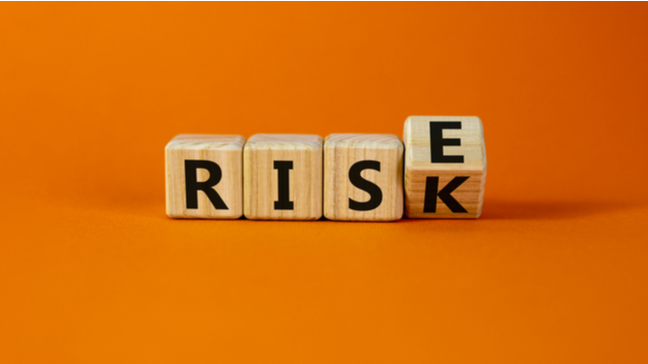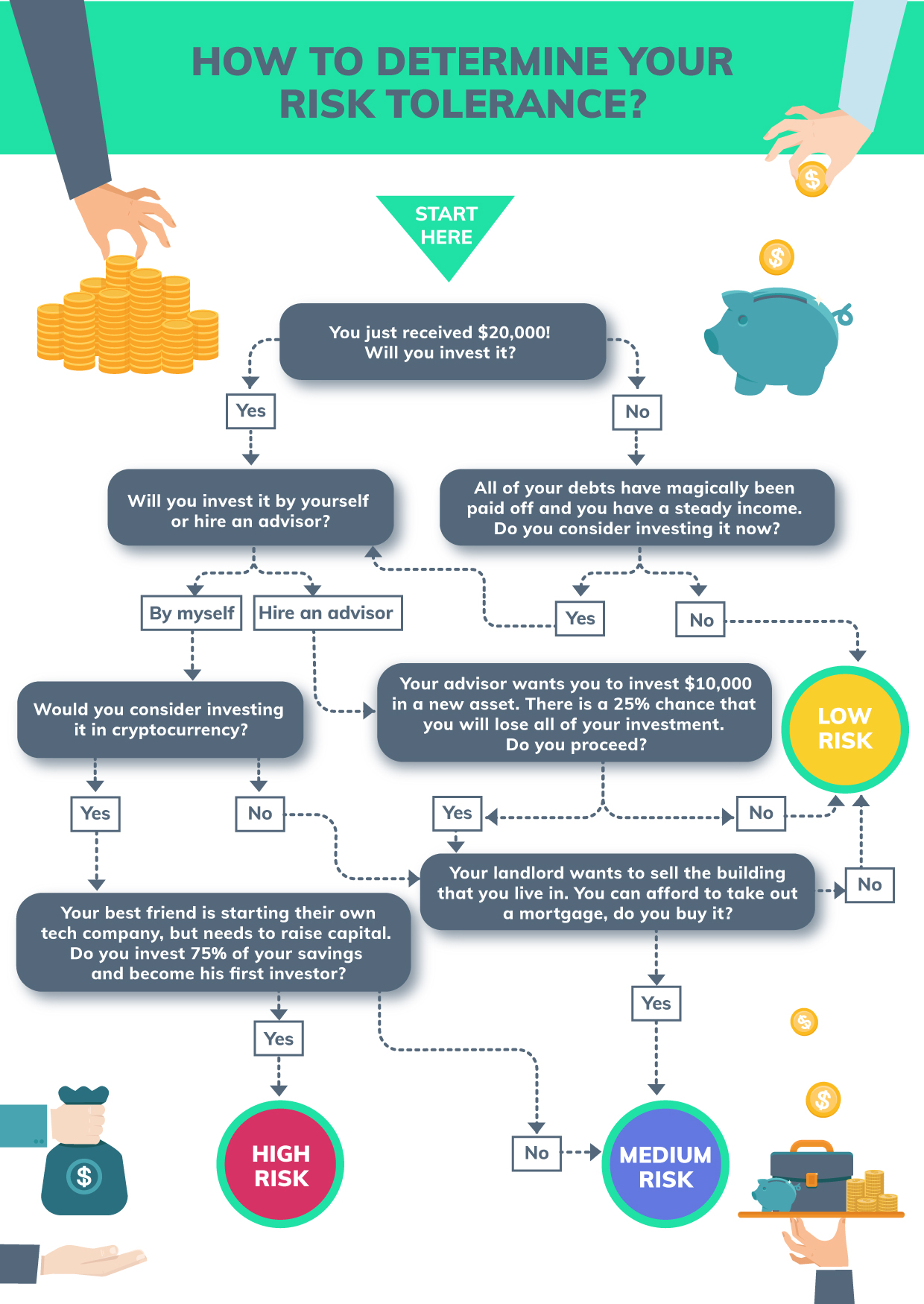When you’re ready to really grow your money, nothing beats investing. It can give you great returns on your capital. In fact, when you pick just the right stock, the sky is the limit when it comes to how much your investment might appreciate.
Successes like Apple and Amazon make savings accounts seem paltry in comparison. There are ‘high-yield’ savings accounts but even those can see your funds essentially being eaten away by inflation.
So, investing in stocks definitely looks appealing. But as you know, nothing in life is guaranteed, and that’s especially true in the stock market. While there’s a chance you could pick a winner, there’s also a risk you could pick a loser – and lose all your money along with it.
Here is everything you need to know in order to make the right decisions for your investment portfolio.
The risks of investing in stocks

Investing in an individual stock is never without risk. First of all, there’s always a chance the company whose stock you hold could go under or suffer a massive setback, and you’d lose most or even all your money. It’s happened to small companies, of course, but it’s happened to big companies, too. Once the firm goes bankrupt, your stock could become totally worthless.
Risks to watch out for
There are some other, different kinds of risk when it comes to investing, including:
- Liquidity risk (when you can’t find a buyer when you want to sell).
- Economic risk (the risk of economic downturns, which affect stock prices).
- Market risk (when the stock isn’t valued on the market as it should be).
There’s no insurance against these risks; you can only keep your eyes open and try to mitigate them as much as you can.
Why you should take some risks
That being said, you shouldn’t avoid stocks just because they’re not foolproof.
The greater the risk, the greater the potential for return. As they say, you can’t win if you don’t play. If you want to take advantage of the potential for incredible gains, you do need to take some risks.
What you need to do is learn how to balance risk and reward. By identifying risky stocks, you can better position yourself to take smarter risks.
How to tell how risky a stock is
As you invest in stocks, you have to choose which ones seem like worthy investments. You do this by researching not only the stock itself – the price, its fluctuations, and so on – but also by researching the company that issued it.
Unless you’re day trading (buying and selling blocks of shares you don’t care about in the hopes of making a few cents on the dollar), you’re probably looking for a stock that will appreciate in value. That will generally happen because the underlying company is strong, with a strong product, good leadership, and a vision for the future.
There are a few ways you can use to analyze risk before buying a stock. Evaluating the company relies on what’s called fundamental analysis, and focusing on charts and data is called technical analysis. You may want to do a blend of both.
Market cap
The market capitalization, or market cap, tells you how big a company is. Coca-Cola’s market cap is over $200 billion. That’s the value of all their outstanding shares of stock.
Really big companies are “large-cap” stocks. There are also “mid-cap” and “small-cap” stocks. Small-cap stocks might be riskier because they aren’t as solid and established as the big players.
Value
You can’t judge a stock by its price alone. “Cheap” stocks aren’t inherently better or worse than “expensive” ones. What matters is the price of the stock in comparison to other factors. One such comparison is the price to earnings ratio (p/e) – the price of the stock compared to how much the company makes in profits. A company that’s cheap to buy but rakes in really good profits could make for a good investment, especially if other investors catch on and drive the price up after you buy. On the other hand, if a company is expensive to buy and doesn’t deliver good value, you’ve got a risky investment on your hands.
Shorts target
You may have heard about the “short squeeze” on GameStop stock. This is referring to investors who targeted GameStop as a company likely to lose value, so they wanted to “short sell” it. Companies that are targeted for shorts may be seen by the market as declining, so an investment is risky. And even when other investors decided to “go long” (intending to buy and hold for a while), the resulting price volatility still makes these companies a risky bet.
Competition
When you’re evaluating a company in preparation to buy stock, look at its business model. Does it have a lot of competition? Is there a splashy (or shrewd) competitor that has the potential to beat them?
It’s always hard to predict the future, but if a company or industry has a lot of competition, it sets up the possibility that they might not make it. It’s risky to throw everything behind one company in a crowded field, because another firm might figure out a way to beat them and become the better investment.
Track record
You should definitely take a look at a company’s track record. Do they have a proven history of advancement, innovation, and excellence? Apple, for example, has a very strong track record – a solid history of performance, even if there have been a few missteps. A strong track record decreases the riskiness, while a spotty track record makes a stock riskier.
Beta
Some people will say you need to check the company’s “beta,” which is a measure of the volatility of its stock price, in order to assess its risk. While the volatility of the price is definitely one data point to consider, obsessing over beta is a backward-looking method. Price changes in the past do not predict performance in the future, so make sure you are considering other methods of evaluating a stock as well.
Common sense
Finally, consider the health of the firm. Have they been in the news, are they rocked by scandals? Has there been any fraud? Has their CEO been ousted? Is the business in a declining industry? Is there a bankruptcy in the offing? These are all red flags that the value of the company may dive shortly, if it hasn’t already.
And while there may still be some money to be made in these situations, those trades lean more toward “speculating” than they do “investing.” If you’re in it for the long haul, the company should be, too.
Low-risk investments vs. high-risk investments

So when you’re picking stocks, you can think of them as low-risk (not no-risk) vs. high-risk investments.
Low-risk stocks
Your lower-risk stocks will be large, stable companies, with a solid history of performance, perhaps a lower price-to-earnings ratio, and a good value to both customer and stockholder. People call these “blue-chip” companies or blue-chip stocks. They have a good reputation, and while they’re not guaranteed to succeed, they’ve been around the block and typically know how to weather the storms.
High-risk stocks
Higher-risk stocks, on the other hand, will have wild price swings, they’ll be in the news all the time (perhaps for the crazy shenanigans of the company’s top leader), they’ll deliver sub-par products or inconsistent products, and they might be way overvalued compared to the profits they bring in. Shares in these companies are definitely not a sure thing, and while they may make for some attractive gains – at least for some investors some of the time – the company’s outlook is unpredictable, to put it mildly.
Tools you can use to tell if a stock is risky
There are a lot of tools you can use to analyze a stock.
Stock tickers and snapshots
There are many places to find stock quotes. A basic search for the company and the word “stock” will display recent stock price information, including a chart showing recent price changes and data such as the opening price, last closing price, 52-week highs and lows, dividend yield if applicable, market cap, and p/e ratio.
You can also find this information on websites such as MarketWatch, YahooFinance, and Bloomberg, among many others.
Trading platforms
For more robust data, turn to your trading platform. Whether you use one of the best brokerage accounts, the place you make your trades should also offer strong analytical tools, where you can see and compare many different data points to get a full picture of a company’s performance.
Stock Screeners
When you want to narrow down options based on particular criteria, you can use stock screeners. These function like filters to provide you a list of stocks that fit your chosen parameters. You’ll still want to evaluate the stocks displayed by the screeners, though.
Stock charts
For technical analysis of a stock’s characteristics and performance, stock charts display tons of relevant information, including the way certain data points have changed over time. You may be able to find detailed stock charts on your trading platform, or there are subscription services that provide you with this advanced information.
If you want to learn how to read stock charts check out our article on Investing for Beginners.
SEC filings
Public companies are required to file public information about their operations, including their balance sheet. You can read these filings and get more detailed info about the company that you can use to make your decision. There are annual filings (called a 10-K), quarterly filings (10-Q), and current reports (9-K) that you can use to get a detailed picture.
To find these reports, there’s a free public database called EDGAR that will let you look up stocks, ETFs, and other securities so you can check out their filings. You’ll also be able to see information on executive pay, shareholder meetings, insider transactions, and many other topics.
Research reports and news
It helps, also, to keep tabs on not only general market news, but also news related to your particular industry or companies of interest. If there’s something going on that makes the news, you as an investor ought to know about it.
Watching the news will keep you informed on major moves, economic trends, and other insights that you can use when you invest. Vetted companies like the Wall Street Journal and CNBC are good starting places for financial news.
Expert advice
Finally, it doesn’t hurt to get expert advice on your potential trades. You can hire an advisor or financial planner for formal advice, or you can ask your broker, if you have one.
It’s important to note that you shouldn’t take advice from just anyone! Especially if that person has something to gain from you investing in the stock. (That’s not exactly ethical). You can double-check for any conflicts of interest by using the Investor Advisor Public Disclosure tool. Look up your advisor or broker and see their professional background, qualifications, and any affiliations or product relationships you should be aware of.
What level of risk are you comfortable with?

“Risk” might mean something different from one person to the next. What you consider risky might not even register on the radar for someone else – or maybe the opposite is true.
The definition of risk depends on what type of investor you are: conservative or aggressive.
Conservative (low- or medium-risk)
If you’re a conservative investor, you want to preserve your capital as much as possible. Losses make you itchy, if not downright panicky. You hate the thought of the value of your investments dropping, and the idea of a total wipeout gives you cold sweats. It’s hard for you to act when you’re uncertain of the outcome, and you want to feel completely confident that any investing moves you make are hedged as much as possible.
Aggressive investor (high-risk)
On the other hand, if you’re an aggressive investor, you feel OK with taking some big swings in the hopes of making some big money. You live by the credo of “You win some, you lose some,” and you’re always looking for the next big thing. You’re alert to opportunity, and you know you have to play big to win big.
Conservative investors are going to be warier of risk than aggressive investors. They’ll be more likely to go for lower-risk investments, where an aggressive investor is OK with high-risk investments because they know that risk is often accompanied by reward.
How to avoid losing money on stocks
Knowing how to assess the riskiness of a stock will take you a long way toward avoiding losing money. Here are other important components.
Know your own comfort level
You should be aware of what level of risk you’re comfortable taking, as well as what your goals are with each investment. Do you want to preserve your capital? Do you want to make tons of money (be realistic here)? Are you trying to diversify your portfolio with this particular investment, or do you believe this company and are in it for the long haul? Or are you just following what everyone else is doing? Be honest about your reasons.
Don’t invest more than you can afford to lose
There’s always a chance that you will lose money. Hedge that risk by only investing what you can afford to lose.
Build your literacy
Learn more about your investments. The more you learn and the more you know, the better you’ll be able to make wise investing decisions.
One way is to use the Public app. Public has no minimums and no fees, and they don’t rely on Payment For Order Flow. PFOF is when a company receives compensation for directing trades to a particular market maker. (It’s what spurred a Congressional hearing about Robinhood’s involvement in GameStop trades – or lack thereof – during the superheated trading in January 2021 and partially why you may be seeking the best Robinhood alternatives.)
Public also offers SIPC-insured investments. SIPC insurance doesn’t guarantee the value of your investments, but it does guarantee that you won’t lose your holding in it.
Do your research
When you invest, it’s on you to do your due diligence. Know the strength of the company, its competition, its position in the market, its leadership, its product, its price, its price compared to its earnings, the volatility of its stock, the volume of trades, and so on.
Basically, if you’re going to give them your money in the hopes that they will succeed – you need to feel confident that they will succeed. Don’t just go by your gut, make sure you can back it up with data.
Stay invested longer
When you buy and sell quickly, you can lose money to fees and commissions. Plus, you’re at the mercy of the constantly changing market.
Investing over a longer time gives you the opportunity to recover from any dips. If the stock dips next week, so what? You’re not cashing out for a while, maybe even years, so there’s plenty of time for it to bounce back and even go higher.
Invest, don’t speculate
Speculating is gambling. It’s putting all your money on red and hoping to hit big. You might…but then again, you might not. When you try to “play the market,” you’ll often get burned. There are so many moving parts and influences that it’s extremely difficult to predict outcomes with any certainty.
Investing is different. When you buy stock in a company, you become a shareholder. You’re part owner. You have a vested interest in the success of that company because when they do well, you do well.
Summary
Making smart choices with investing isn’t easy – if it was, everyone would do it! But it is worth it to learn how to assess your investments. Knowing how to tell what stocks are risky will help you buy shares of strong companies with lots of potential – and lots of room for the value of your stock to rise, so you can grow your wealth.